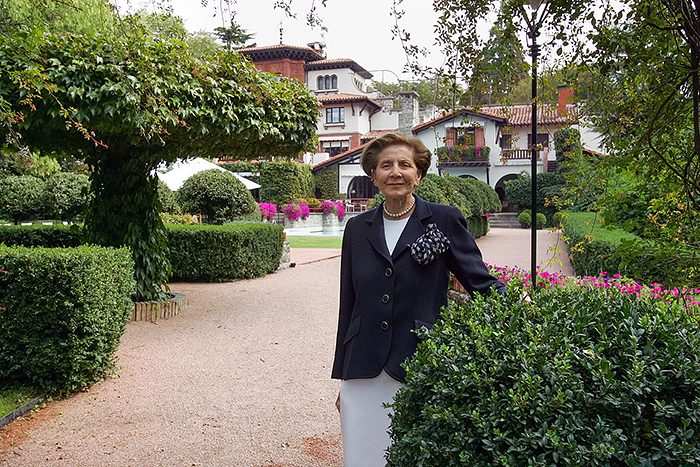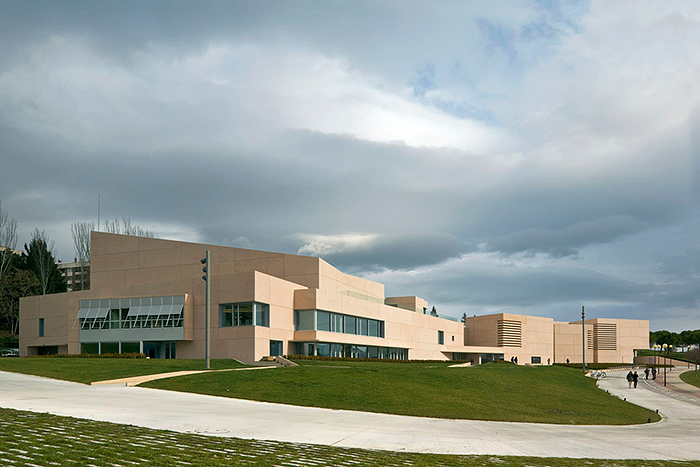27 September
Women collectors in the 20th century: María Josefa Huarte
Ignacio Miguéliz Valcarlos
Chair of Navarrese Heritage and Art
María Josefa Huarte Beaumont (1927-2015) emerges as the main and most important female figure linked to collecting and patronage of the arts in Navarre throughout the Contemporary Age. Third daughter of Félix Huarte Goñi (1896-1971) and Adriana Beaumont Galdúroz (1901-1994), she had three brothers: Juan, Jesús and Felipe. With them she shared her passion for art in all its forms and manifestations and her work as a patron and collector, an unprecedented role in the Spain of her time.

María Josefa Huarte at her home in Pamplona
However, a priori none of the siblings had received an artistic training nor in her family there was a tradition or interest in art, except for her father's skill as a draughtsman. As she herself confessed, María Josefa formed her collection in a self-taught way, buying by instinct the works that inspired her, in such a way that she established an empathetic relationship with them, an affective connection. She completed this approach staff with a series of conversations with the philosopher Santiago Amón, with whom she held sessions based on a dialogue about art and aesthetics, which provided her with a theoretical basis.
Initially, the collection that she formed throughout her life was arranged in her home in Madrid, where the location of all the works in a specific space and linked to the rest of the pieces was a decision staff of María Josefa. When placing a piece in her house, she took into account not only the relationship of the work with the space, the light, the rest of the pieces and the furniture, but also the creation of an intimate space of relationship with the works, in which each one had its own place where they could be contemplated in all their magnitude. To this end, he did not hesitate to tear down partitions, wall up windows and modify the structure of his house, so that each work would have a space in which to shine.

signature of the donation of the collection to the University of Navarra by María Josefa Huarte and Ángel Gómez Montoro
The collection, small but select, gathers 47 works by 18 different artists and focuses on Spanish abstract art of the second half of the 20th century, with capital names within the Spanish art scene, although the pillars of the collection are Pablo Palazuelo, Jorge Oteiza and Antoni Tàpies. Along with these authors, four international authors are included: Rothko, Picasso, Kandinsky and Ypousteguy. In 2008, and after unsuccessful negotiations with the Government of Navarra and the City Council of Pamplona, María Josefa Huarte offered the donation of her collection to the University of Navarra, with the sole condition that a Museum be built for this purpose, and, if possible, that it be designed by the architect Rafael Moneo. In Maria Josefa's thoughts was the certainty that Contemporary Art was not appreciated because the general public did not understand it, for which she wanted the collection to be opened to the public and explained and investigated, so that the visitor could understand it and, on that basis, decide whether he liked it or not. The University accepted the donation of the collection and the Museum opened its doors on January 22, 2015, joining the works donated by María Josefa to the collection of photography on Spain that the University already had.

University of Navarra Museum
